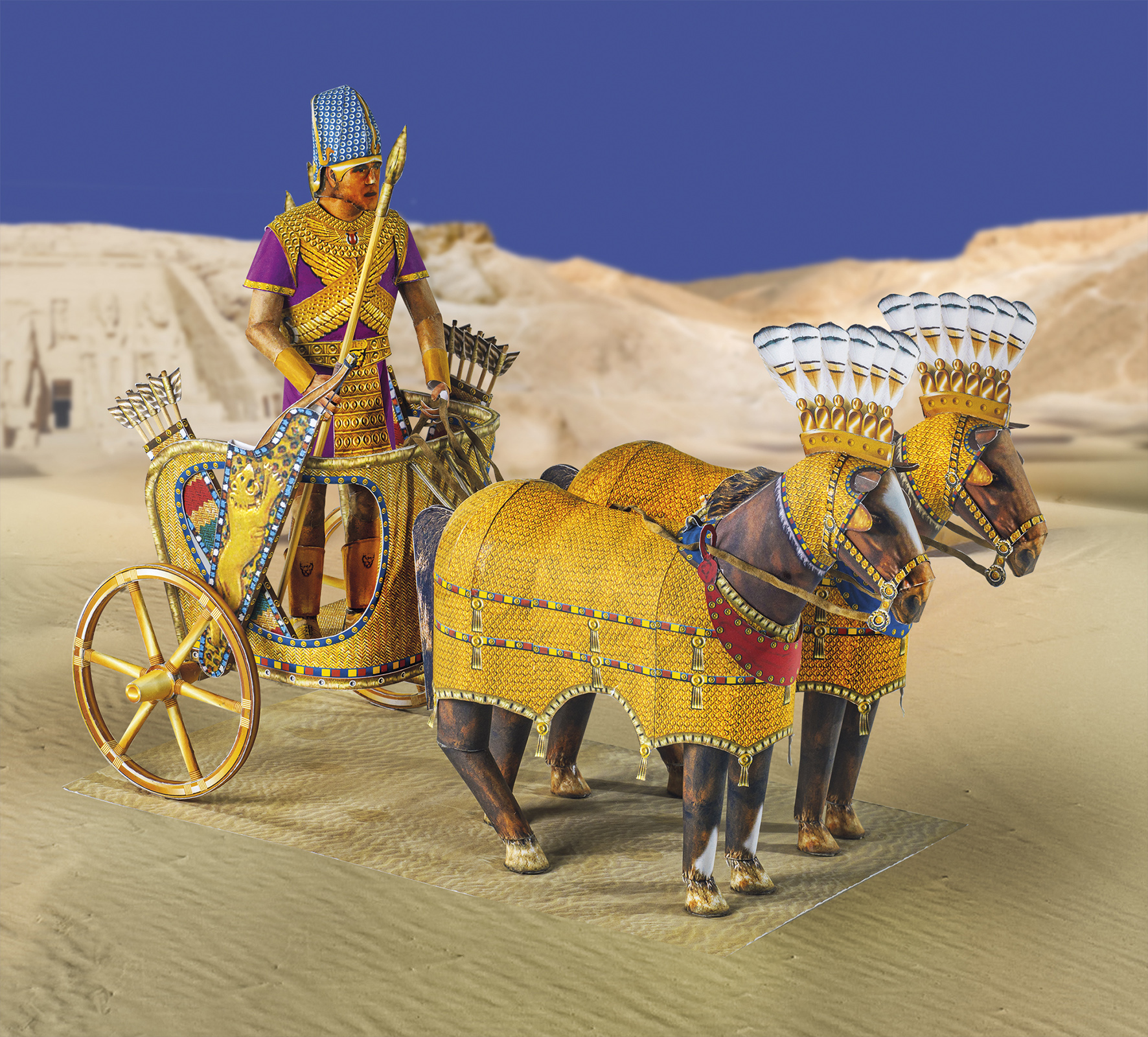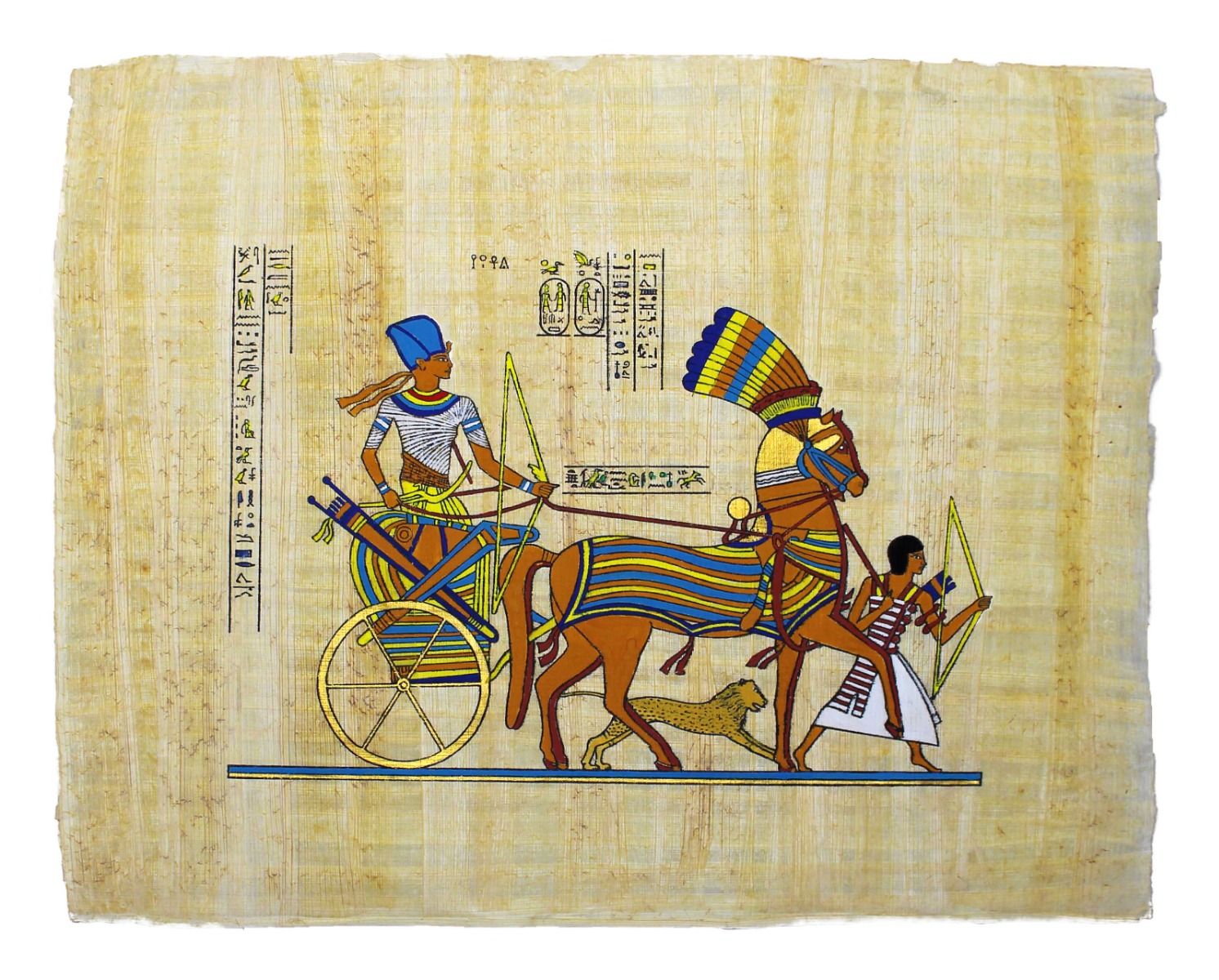Egyptian Chariot - Schreiber Bogen
Product number:
2859
The model shows the typical Egyptian chariot based on the "Victory Parade of Ramses II".
The model includes:
- 2 horses in decorative armour
- Chariot
- Warrior / Pharaoh Ramses II
A supplement to the ancient Egyptian handicraft sheets from PGI. You can hardly teach this subject to your pupils in a more descriptive and motivating way.
Scale 1:9
11 sheets A4
sturdy, coloured paper
30 cm long, 18 cm wide, 26 cm high
| Aspiration scale: | Medium |
|---|---|
| Time Line: | 2,5 Hours |
Product information "Egyptian Chariot - Schreiber Bogen"
Egyptian chariot
In ancient times, chariots were single-axle military vehicles harnessed to horses. They usually consisted of two wheels with a simple bar to which the horses were harnessed. The platform was shaped like the letter D and had railings on the sides and front. This was usually richly decorated. The entrance was at the back on the open side. A chariot was so lightly built that it could be carried by one man.
From the people of the Hittites and the Hyksos, a group of foreign kings, the Egyptians adopted many weapons technologies, probably also the chariots. As a great power, Egypt could afford to purchase and maintain the vehicles. Special knowledge and much effort were required for maintenance. In addition, horses had to be kept in large herds, which had not existed in Egypt until then. This meant that suitable stabling, care and training of the animals were necessary. The training of the charioteers and horse trainers was also very costly.
The fighters on the chariots were archers. The chariots were also equipped with shields and weapons such as lances, axes or throwing spears. The chariot corps of the Egyptian army was an elite force. It was divided into squadrons of 25 chariots each. Several squadrons formed a regiment. Many chariot regiments drove on the flanks of the infantry in a battle, others were ready behind the front as reserves. During an attack, several hundred chariots drove close together. This gave them a more massive effect and also influenced the enemy psychologically. The reserve was responsible for pursuing the enemy. Pharaohs always rode into battle on chariots. Whether they drove ahead, were part of the army or stayed in the background is not known.
Reliefs from Egyptian tombs and temples that are around 3600 years old show pharaohs and warriors proudly riding into battle on chariots drawn by horses. But the vehicles were not only popular with the Egyptian army. Anyone who was anyone would buy one or more chariots as an object of prestige. People at that time were fascinated by the latest technology, practicality and comfort. A chariot could reach a speed of 40 kilometres per hour. In ancient times, such a speed was unimaginable until then. The enthusiasm for these vehicles was naturally also great among kings and pharaohs. Queen Nefertiti had herself depicted in relief with her chariot. During excavations, huge stables were discovered that date back to Ramses II. In Tutankhamun's burial chambers, several chariots were found as burial objects.
In ancient times, chariots were single-axle military vehicles harnessed to horses. They usually consisted of two wheels with a simple bar to which the horses were harnessed. The platform was shaped like the letter D and had railings on the sides and front. This was usually richly decorated. The entrance was at the back on the open side. A chariot was so lightly built that it could be carried by one man.
From the people of the Hittites and the Hyksos, a group of foreign kings, the Egyptians adopted many weapons technologies, probably also the chariots. As a great power, Egypt could afford to purchase and maintain the vehicles. Special knowledge and much effort were required for maintenance. In addition, horses had to be kept in large herds, which had not existed in Egypt until then. This meant that suitable stabling, care and training of the animals were necessary. The training of the charioteers and horse trainers was also very costly.
The fighters on the chariots were archers. The chariots were also equipped with shields and weapons such as lances, axes or throwing spears. The chariot corps of the Egyptian army was an elite force. It was divided into squadrons of 25 chariots each. Several squadrons formed a regiment. Many chariot regiments drove on the flanks of the infantry in a battle, others were ready behind the front as reserves. During an attack, several hundred chariots drove close together. This gave them a more massive effect and also influenced the enemy psychologically. The reserve was responsible for pursuing the enemy. Pharaohs always rode into battle on chariots. Whether they drove ahead, were part of the army or stayed in the background is not known.
Reliefs from Egyptian tombs and temples that are around 3600 years old show pharaohs and warriors proudly riding into battle on chariots drawn by horses. But the vehicles were not only popular with the Egyptian army. Anyone who was anyone would buy one or more chariots as an object of prestige. People at that time were fascinated by the latest technology, practicality and comfort. A chariot could reach a speed of 40 kilometres per hour. In ancient times, such a speed was unimaginable until then. The enthusiasm for these vehicles was naturally also great among kings and pharaohs. Queen Nefertiti had herself depicted in relief with her chariot. During excavations, huge stables were discovered that date back to Ramses II. In Tutankhamun's burial chambers, several chariots were found as burial objects.
What else you need for assembly
> scissors or a cutter, e.g. craft knife
> a good all-purpose glue, e.g. craft glue
> a blunt knife for folding
> a ruler
> scissors or a cutter, e.g. craft knife
> a good all-purpose glue, e.g. craft glue
> a blunt knife for folding
> a ruler


